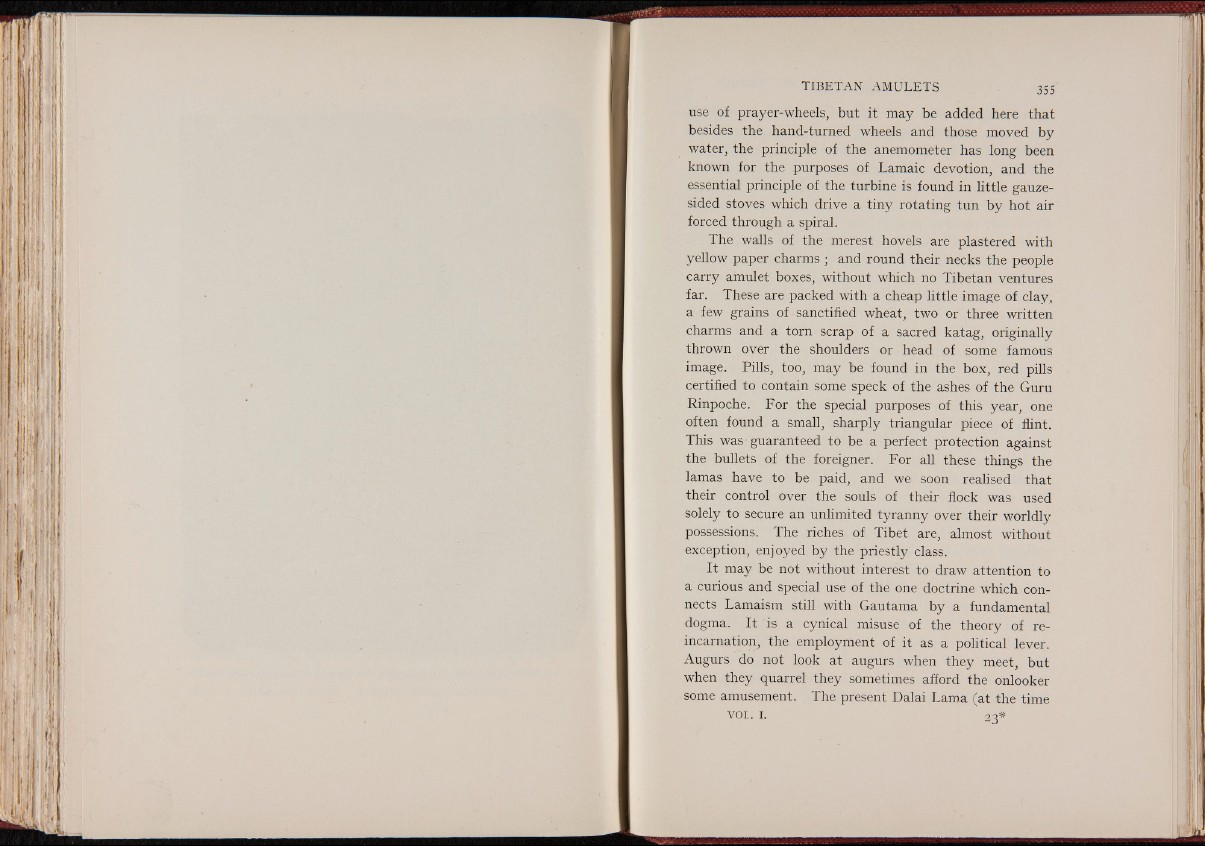
TIBETAN AMULETS 355'
use of prayer-wheels, but it may be added here that
besides the hand-turned wheels and those moved by
water, the principle of the anemometer has long been
known for the purposes of Lamaic devotion, and the
essential principle of the turbine is found in little gauzesided
stoves which drive a tiny rotating tun by hot air
forced through a spiral.
The walls of the merest hovels are plastered with
yellow paper charms ; and round their necks the people
carry amulet boxes, without which no Tibetan ventures
far. These are packed with a cheap little image of clay,
a few grains of sanctified wheat, two or three written
charms and a torn scrap of a sacred katag, originally
thrown over the shoulders or head of some famous
image. Pills, too, may be found in the box, red pills
certified to contain some speck of the ashes of the Guru
Rinpoche. For the special purposes of this year, one
often found a small, sharply triangular piece of flint.
This was guaranteed to be a perfect protection against
the bullets of the foreigner. For all these things the
lamas have to be paid, and we soon realised that
their control over the souls of their flock was used
solely to secure an unlimited tyranny over their worldly
possessions. The riches of Tibet are, almost without
exception, enjoyed by the priestly class.
It may be not without interest to draw attention to
a curious and special use of the one doctrine which connects
Lamaism still with Gautama by a fundamental
dogma. It is a cynical misuse of the theory of reincarnation,
the employment of it as a political lever.
Augurs do not look at augurs when they meet, but
when they quarrel they sometimes afford the onlooker
some amusement. The present Dalai Lama (at the time
VOL. I.